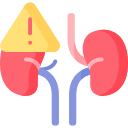ZOPICLONE
THERAPEUTICS
brands
Class
- Neuroscience-based Nomenclature: GABA positive allosteric modulator (GABA-PAM)
- Non-benzodiazepine hypnotic; alpha 1 isoform selective agonist of GABA-A/ benzodiazepine receptors
ZOPICLONE commonly prescribed for
(Bold for FDA approved)
 How ZOPICLONE works
How ZOPICLONE works
• May bind selectively to a subtype of the benzodiazepine receptor, the alpha 1 isoform
• May enhance GABA inhibitory actions that provide sedative hypnotic effects more selectively than other actions of GABA
• Boosts chloride conductance through GABA-regulated channels
• Inhibitory actions in sleep centers may provide sedative hypnotic effects
How long until ZOPICLONE works
• Generally takes effect in less than an hour
SIDE EFFECTS
 Notable Side Effects
Notable Side Effects
• Sedation
• Dizziness, ataxia
• Dose-dependent amnesia
• Hyperexcitability, nervousness
• Dry mouth, loss of appetite, constipation, bitter taste
• Impaired vision
 Life Threatening Side Effects
Life Threatening Side Effects
• Respiratory depression, especially when taken with other CNS depressants in overdose
• Rare angioedema
weight gain

unusual
sedation

common
What to do about ZOPICLONE side effects
• Wait
• To avoid problems with memory, only take zopiclone if planning to have a full night’s sleep
• Lower the dose
• Switch to a shorter-acting sedative hypnotic
• Administer flumazenil if side effects are severe or life-threatening
DOSING AND USE
usual dosage range
• 7.5 mg at bedtime
 Dosage Forms
Dosage Forms
• Tablet 5 mg, 7.5 mg scored
long term use
• Not generally intended for use past 4 weeks
habit forming
• Some patients may develop dependence and/or tolerance; risk may be greater with higher doses
• History of drug addiction may increase risk of dependence
SPECIAL POPULATIONS
 Renal Impairment
Renal Impairment
• Increased plasma levels
• May need to lower dose
 Hepatic Impairment
Hepatic Impairment
• Increased plasma levels
• Recommended dose 3.75 mg
• Not recommended for use in patients with severe impairment
 Cardiac Impairment
Cardiac Impairment
• Dosage adjustment may not be necessary
 Elderly
Elderly
• May be more susceptible to adverse effects
• Initial dose 3.75 mg at bedtime; can increase to usual adult dose if necessary and tolerated
 Children and Adolescents
Children and Adolescents
• Safety and efficacy have not been established
• Long-term effects of zopiclone in children/ adolescents are unknown
• Should generally receive lower doses and be more closely monitored
 Pregnancy
Pregnancy
• Controlled studies have not been conducted in pregnant women
• Some animal studies show adverse effects
• Infants whose mothers took sedative hypnotics during pregnancy may experience some withdrawal symptoms
• Neonatal flaccidity has been reported in infants whose mothers took sedative hypnotics during pregnancy
 Breast Feeding
Breast Feeding
• Some drug is found in mother’s breast milk
• Recommended either to discontinue drug or bottle feed
Based on data Published online by Cambridge University Press
Compiled by Dr. Jash Ajmera